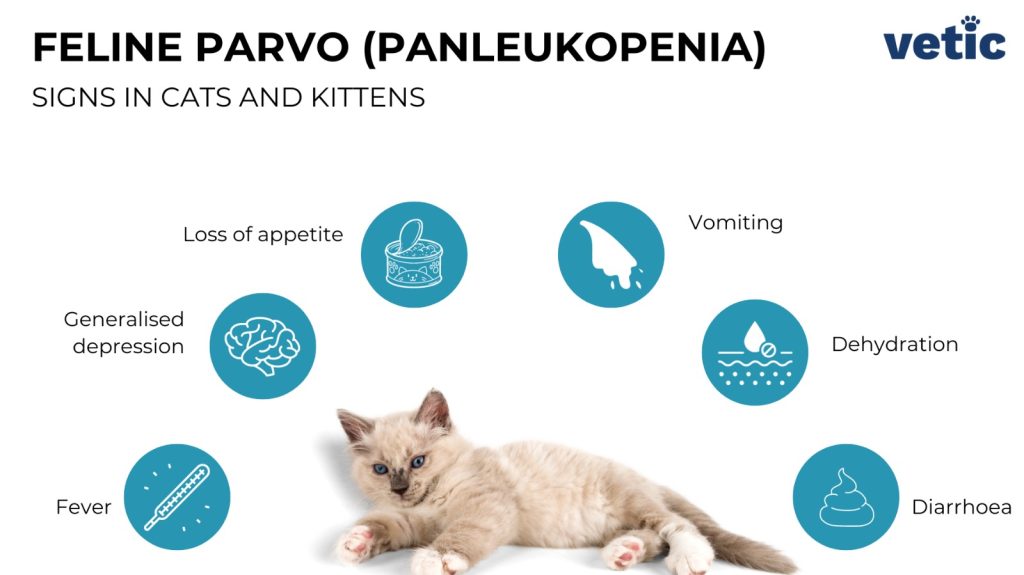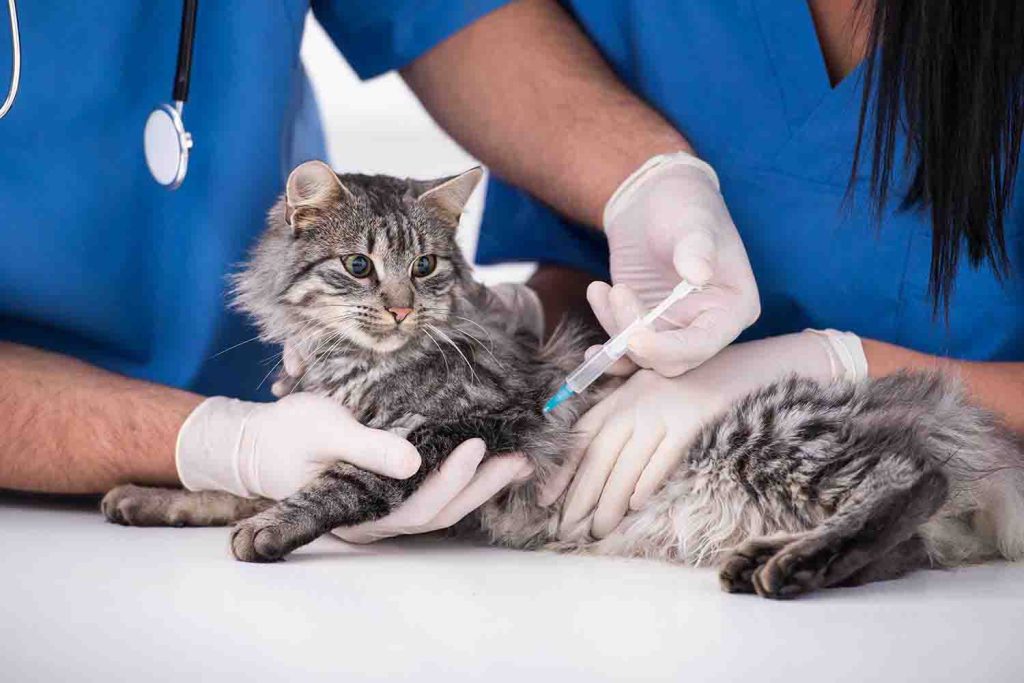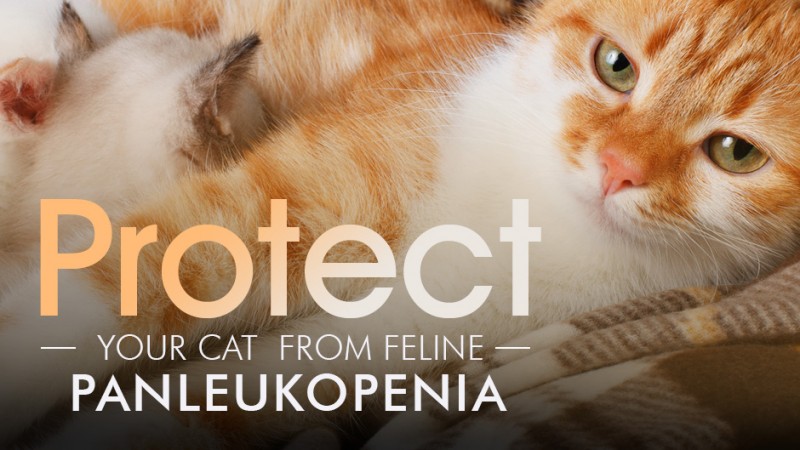Feline Panleukopenia Virus (FPV), also known as feline distemper, is one of the most serious and highly contagious viral diseases in cats. It primarily affects unvaccinated cats, kittens, and those with weakened immune systems. This disease can be fatal if not detected and treated early. Despite its severity, feline panleukopenia is entirely preventable with proper vaccination, making it essential for all cat owners to understand the risks, symptoms, and preventive measures.
In this blog post, we’ll take an in-depth look at what FPV is, how it spreads, how to spot the symptoms, and, most importantly, how to protect your cat from this dangerous disease.
What is Feline Panleukopenia Virus (FPV)?
Feline Panleukopenia Virus is a highly contagious virus that attacks a cat’s immune system and causes severe gastrointestinal, immune, and neurological damage. It is part of the parvovirus family and is similar in structure and impact to canine parvovirus, which affects dogs. FPV is a serious threat to cats, especially kittens and those with compromised immune systems, as it can quickly cause a drop in white blood cell count, making it difficult for the body to fight off infections.
The virus is particularly dangerous because it is extremely resilient and can survive in the environment for long periods, making it easy for infected cats to spread the disease. Even after an infected cat has been removed from an area, the virus can remain viable for months, posing a continued risk to other cats.
How is Feline Panleukopenia Spread?
FPV is spread primarily through direct contact with an infected cat’s bodily fluids, such as feces, urine, saliva, and nasal secretions. Cats can also contract the virus by coming into contact with contaminated surfaces, food bowls, bedding, or litter boxes. The virus is highly contagious, and even a small amount of exposure can lead to infection.
Kittens are particularly vulnerable, as they may not yet have developed sufficient immunity, and their immune systems are still maturing. Infected mothers can also transmit the virus to their kittens in utero or during birth, putting the newborns at risk.
FPV can also spread in environments where many cats come into close contact, such as animal shelters, catteries, or multi-cat households. It’s important to note that while the virus primarily affects cats, it does not pose a threat to humans or dogs.

Symptoms of Feline Panleukopenia
The symptoms of feline panleukopenia can vary depending on the severity of the infection, the age of the cat, and its overall health. However, some common signs to look out for include:
Severe Diarrhea: One of the hallmark symptoms of FPV is severe, often bloody diarrhea. The virus attacks the gastrointestinal tract, causing inflammation, fluid loss, and disruption of normal digestion. This can lead to dehydration, weakness, and weight loss.
Vomiting: Cats infected with FPV may experience persistent vomiting. This is a result of the virus affecting the gastrointestinal system, leading to nausea and discomfort.
Lethargy and Weakness: Infected cats often appear very lethargic, losing interest in normal activities such as eating, playing, or grooming. They may seem unusually tired and weak due to the body fighting off the infection and the fluid loss caused by diarrhea and vomiting.
Loss of Appetite: A decrease in appetite is common in cats with FPV. They may refuse to eat or drink, further contributing to dehydration and weakness.
Fever: Fever is another common symptom of feline panleukopenia, as the body tries to fight off the virus. A high fever can be dangerous, especially if not managed, as it can lead to organ failure.
Dehydration: Due to the excessive vomiting and diarrhea, cats infected with FPV can quickly become severely dehydrated. Signs of dehydration include dry gums, sunken eyes, and reduced skin elasticity.
Neurological Symptoms: In some cases, FPV can affect the nervous system, leading to uncoordinated movement, tremors, or seizures. This is more common in kittens or young cats who are infected in utero or shortly after birth.
Sudden Death: In severe cases, particularly in young kittens or immunocompromised cats, FPV can cause sudden death, sometimes without showing any prior symptoms.
Diagnosing Feline Panleukopenia
If you suspect your cat may have contracted FPV, it’s crucial to seek veterinary care immediately. A veterinarian will typically perform a physical examination and may recommend blood tests to confirm the diagnosis. One of the key indicators is a low white blood cell count (leukopenia), which is a hallmark of the disease. Your vet may also perform a fecal test to detect the presence of the virus.
Early detection is vital, as the prognosis for FPV can improve significantly with prompt treatment. The virus can be fatal if left untreated, especially in kittens or immunocompromised cats.

Treatment for Feline Panleukopenia
Currently, there is no cure for feline panleukopenia, but supportive treatment can help manage symptoms and improve the cat’s chances of survival. The main goals of treatment are to stabilize the cat’s condition, control dehydration, and prevent secondary infections. Treatment options include:
Fluid Therapy: Dehydration is one of the most critical concerns in managing FPV. Intravenous (IV) fluids are often administered to replenish lost fluids and electrolytes, keeping the cat hydrated and supporting kidney function.
Antibiotics: While antibiotics cannot treat the virus itself, they are often given to prevent or treat secondary bacterial infections. FPV weakens the immune system, making the cat more susceptible to infections.
Anti-nausea and Anti-diarrheal Medications: To control vomiting and diarrhea, your vet may administer anti-nausea medications or drugs to reduce intestinal inflammation. This helps manage symptoms and prevents further fluid loss.
Nutritional Support: Because affected cats often refuse food, feeding tubes may be required to provide essential nutrients. Some cats may also need a specialized diet to help with recovery and rebuild their strength.
Isolation: Due to its highly contagious nature, cats diagnosed with FPV should be isolated from other animals to prevent the virus from spreading.
Preventing Feline Panleukopenia
The best way to protect your cat from feline panleukopenia is vaccination. The vaccine for FPV is safe, effective, and widely available. Most cats are vaccinated against FPV as part of their routine vaccinations, which are usually given as a combination vaccine (FVRCP) that also protects against other viral infections like feline herpesvirus and calicivirus.
Vaccinating your cat will help protect them from this deadly virus, especially in high-risk environments like shelters, catteries, or households with multiple cats. Kittens should receive their first vaccination at around 8 weeks of age, with booster shots given until they are 16 weeks old. Adult cats will need regular booster shots to maintain immunity.
Keeping your cat indoors and limiting exposure to potentially infected animals is another important preventive measure. Avoiding contact with stray or sick cats can significantly reduce the risk of FPV transmission. If you have multiple cats, it’s important to regularly disinfect food bowls, litter boxes, and other surfaces to reduce the risk of cross-contamination.

Conclusion
Feline Panleukopenia Virus is a deadly disease that can affect cats of all ages, but it is preventable with proper vaccination. Early detection and treatment are critical, and with prompt care, many cats can survive and recover from the virus. However, the best approach is prevention—ensuring your cat is vaccinated, practicing good hygiene, and minimizing exposure to high-risk environments. By taking these steps, you can help protect your cat from this potentially fatal disease and keep them healthy for years to come.
